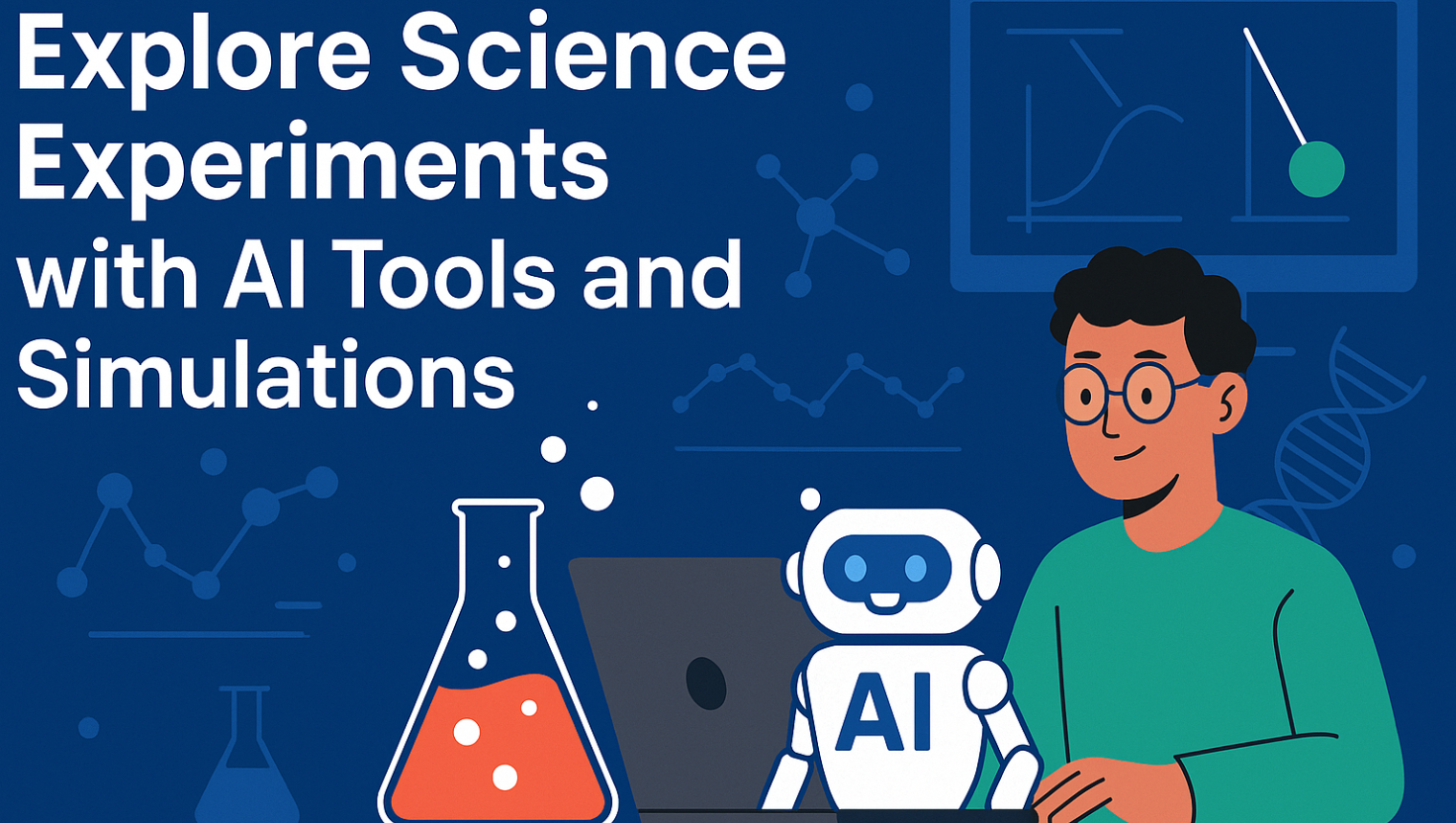Explore Science Experiments with AI Tools and Simulations
Learning science in the new technology-savvy era is changing. The days of vinegar-and-baking-soda volcanoes are over. Students, teachers, and science buffs can now explore experiments and discoveries more in-depth through Artificial Intelligence (AI) and interactive simulators.
AI isn't just revolutionizing industries—it's also smart-ifying science projects, making them smarter, quicker, and more fun. Whether you're a teacher organizing class experiments or a student getting ready for a science fair, AI apps and virtual simulations are your best friends now.
Why Should You Use AI and Simulations in Science Projects?
Conventional science experiments might be constrained by time, resources, or even safety. However, with the use of AI and simulations, students can:
Try out advanced ideas (e.g., quantum physics or genetics)
Make predictions using data
Quick testing of various scenarios and safely
Conduct laboratory work online easily without cost
These technologies not only enhance learning outcomes but also enhance access to science by making it fun, accessible, and inclusive.
5 Ways to Leverage AI & Simulations in School Science Projects
1. AI-Hypothesis Testing
AI applications such as ChatGPT or Wolfram Alpha may help students formulate hypotheses, learn from background information, and conduct test results simulation prior to any hands-on experimentation.
✅ Demonstration: Have AI create hypotheses for how temperature influences the growth of plants and contrast the same with actual experiments.
2. Virtual Labs
Virtual programs such as PhET Simulations, Labster, and MEL Science enable the student to experiment virtually—ranging from chemistry titrations to electric circuits.
✅ No need for a complete laboratory setup—carry out experiments straight from your browser.
3. AI Data Analysis
Tools backed by AI are able to deal with heaps of experiment data and plot graphs, recognize patterns, or even make suggestions for optimizing.
✅ Software such as Excel AI, SciNote, or even Google Sheets with AI extensions assist in analyzing experimental results in greater detail.
4. Simulating Physics and Engineering Principles
Students can simulate structures, test physics principles, or simulate motion with AI-powered software such as Algodoo, Tinkercad, or Crocodile Physics.
✅ Example: Simulate how bridge structures react to earthquakes using real data inputs.
5. Developing AI-Based Science Models
Develop a simple AI weather forecaster, disease sensor in plants, or air quality monitor using software such as Teachable Machine, Scratch AI, or MIT App Inventor.
✅ Students can transform a Raspberry Pi or smartphone into an intelligent science tool.
Fun Fact:
A 2024 EdTech survey indicated that classrooms that utilized AI and simulations in science class experienced a 35% boost in project creativity and a 28% boost in student engagement.
Real-Life Inspiration
Case Study: A 7th-grade girl from Canada employed AI to examine rainfall and crop yields data and developed a predictive model for farming. Her project transformed a regional science fair and is currently being tested in local schools.
Conclusion: Science + AI = Endless Exploration
Science projects aren’t just about proving theories anymore—they’re about innovation, creativity, and real-world problem-solving. With AI tools and simulations, students can explore beyond textbooks, test bold ideas, and build projects that could shape the future.
Whether you’re trying to simulate a volcano, decode DNA, or predict climate change—AI is ready to help.
Ready to Start?
Here are a few free or low-cost tools to explore:
ChatGPT / Wolfram Alpha – for research and AI explanations
PhET Simulations / Labster – for online labs and physics demonstrations
Teachable Machine / Scratch AI – to make basic AI projects
Tinkercad / Algodoo – for 3D modeling and simulation of engineering
SciNote / Google Sheets AI – for data analysis and reports
